Abstract
Samples of 61 home grown and 199 imported vegetables of different varieties were examined for Escherichia coli, faecal streptococci and, when E. coli was present, for salmonellas. Eleven per cent of samples contained greater than 10(4) E. coli per 100 g, and 14% greater than 10(6) faecal streptococci per 100 g. Salmonellas were isolated from 23 out of 103 samples examined. Salmonellas were isolated from 8% of 76 samples with E. coli less than 10(4)/100 g, but from 63% of 27 samples with E. coli exceeding 10(4)/100 g; from 6% of 65 samples containing less than 10(6) faecal streptococci/100 g but from 51% of 37 samples containing more than 10(6)/100 g. S. typhi was isolated from one sample of vegetables imported from the tropics. To our knowledge this is the first isolation of S. typhi from food in the Netherlands. Products from tropical countries were found to present the highest level of contamination. The hygienic quality of Dutch products is sometimes inferior to that of similar imported products, although the different seasons of sampling may have influenced the result. For the prevention of risk to the consumer of vegetables, good kitchen hygiene would appear to be the most important factor.
Full text
PDF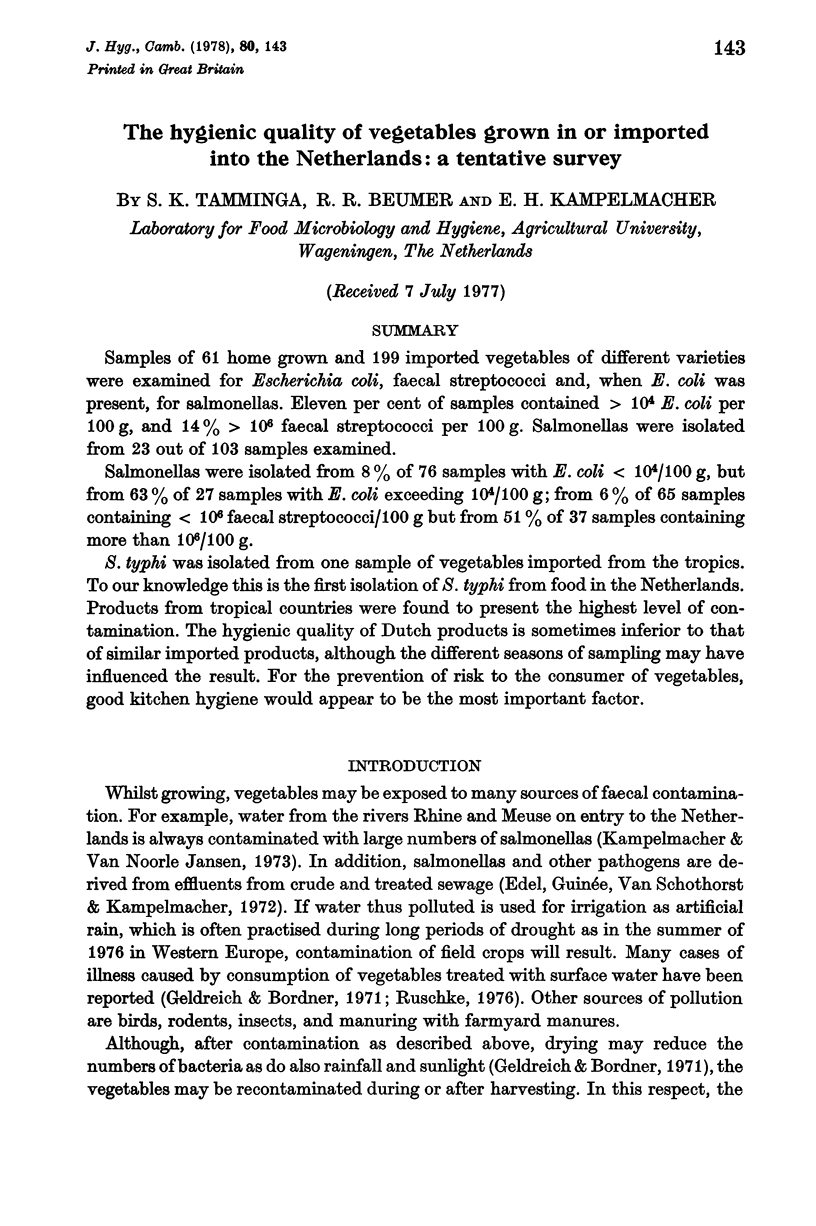

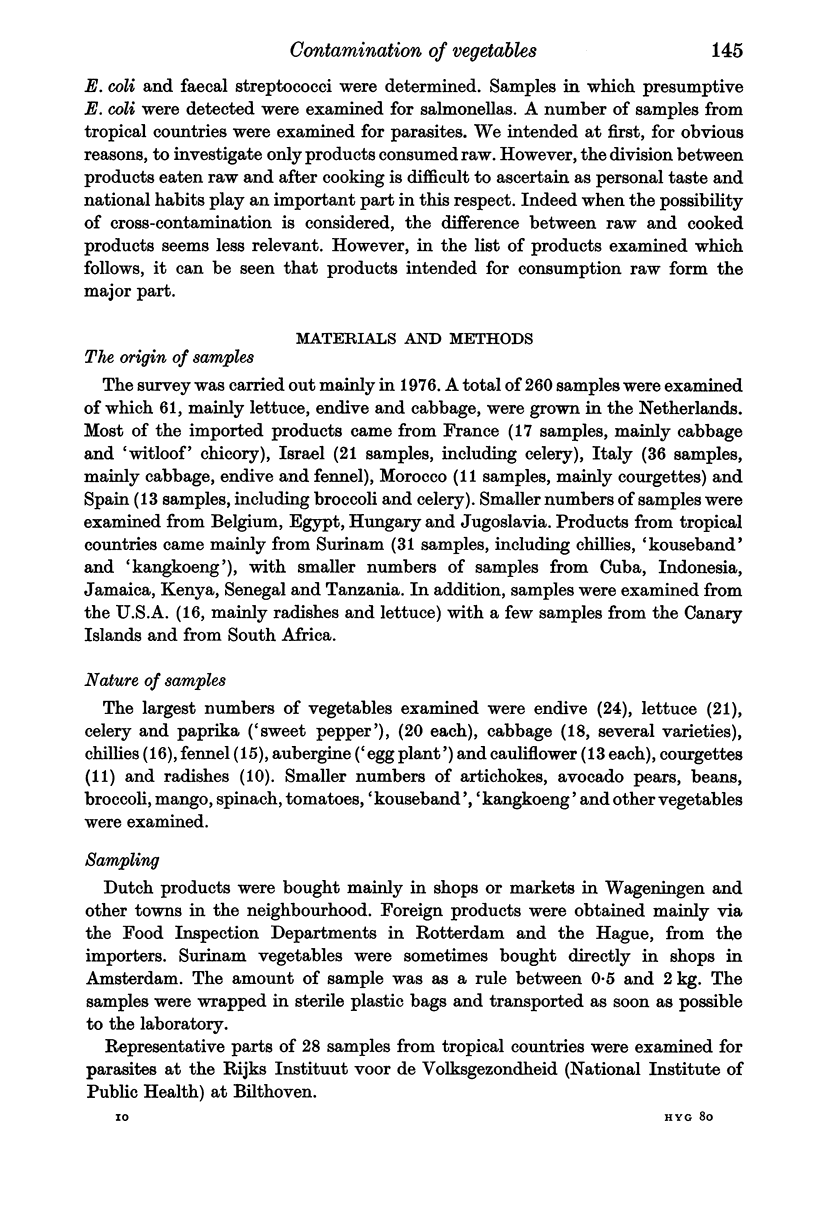
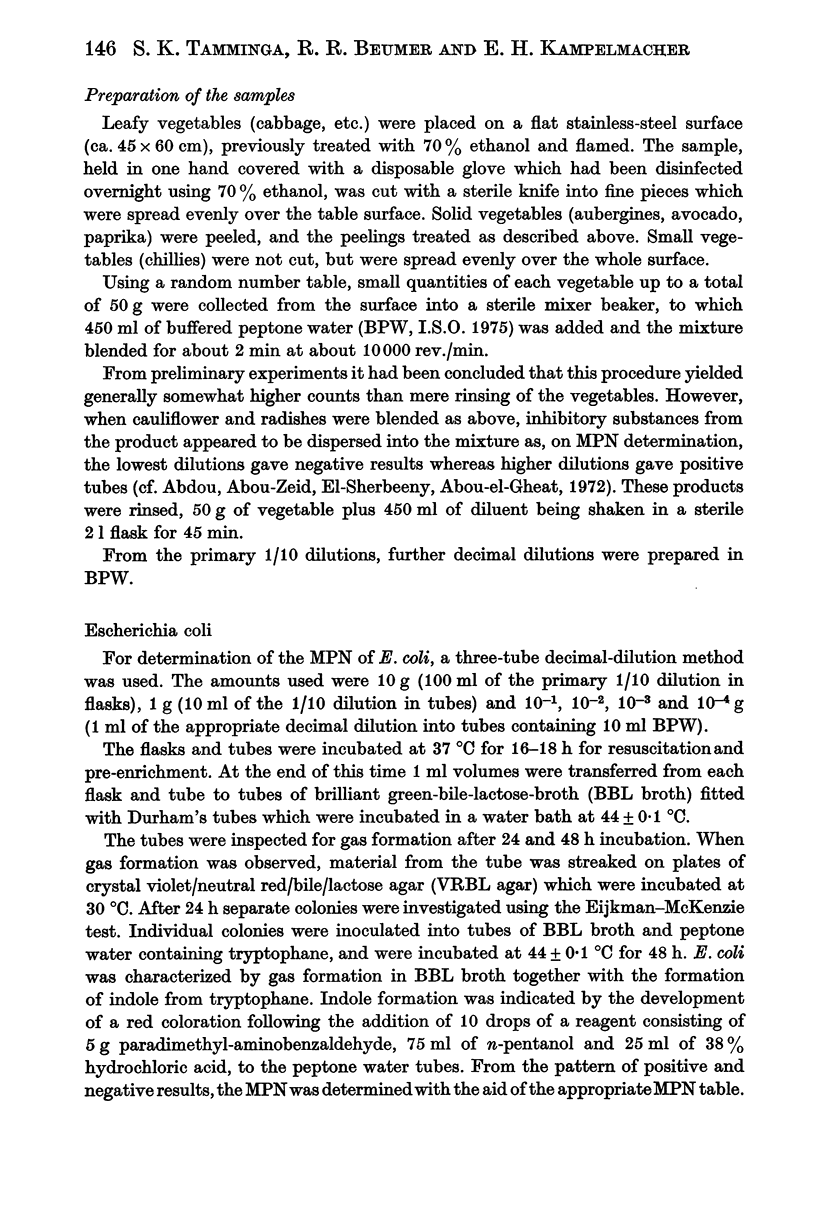


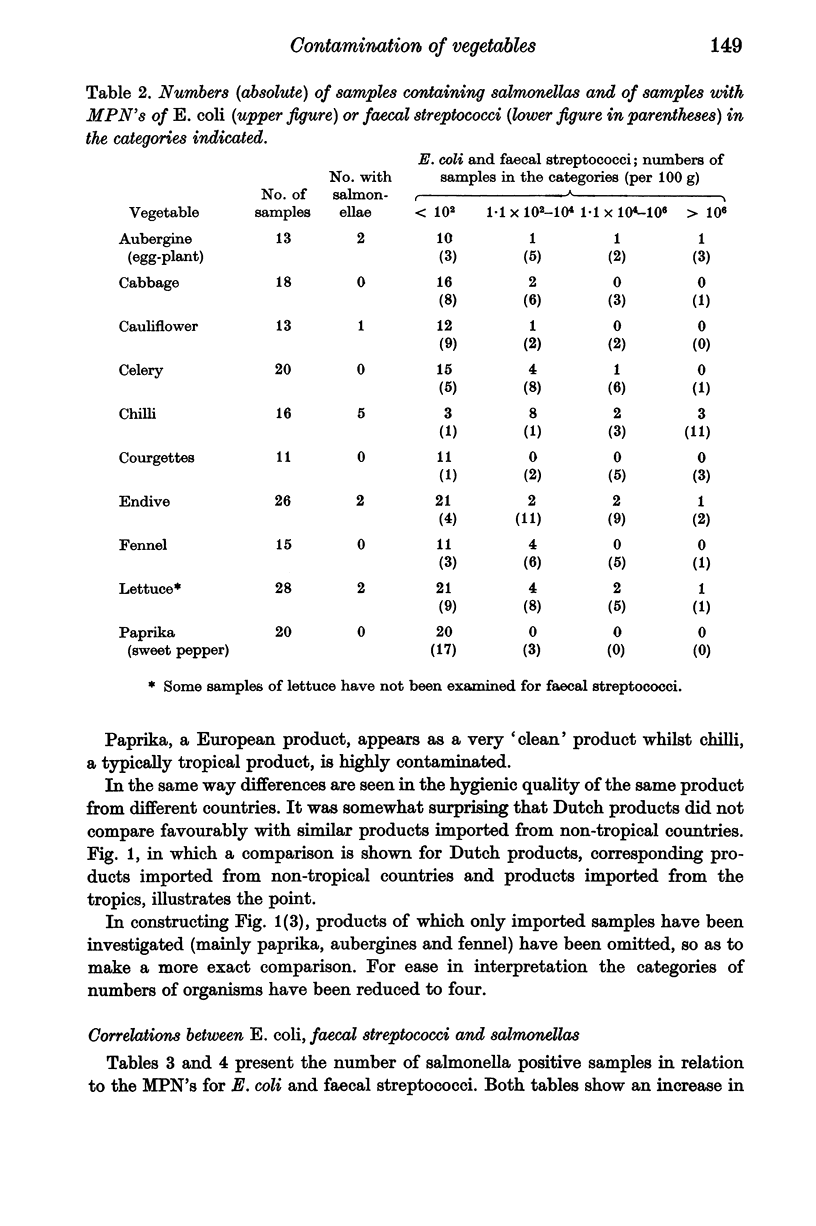
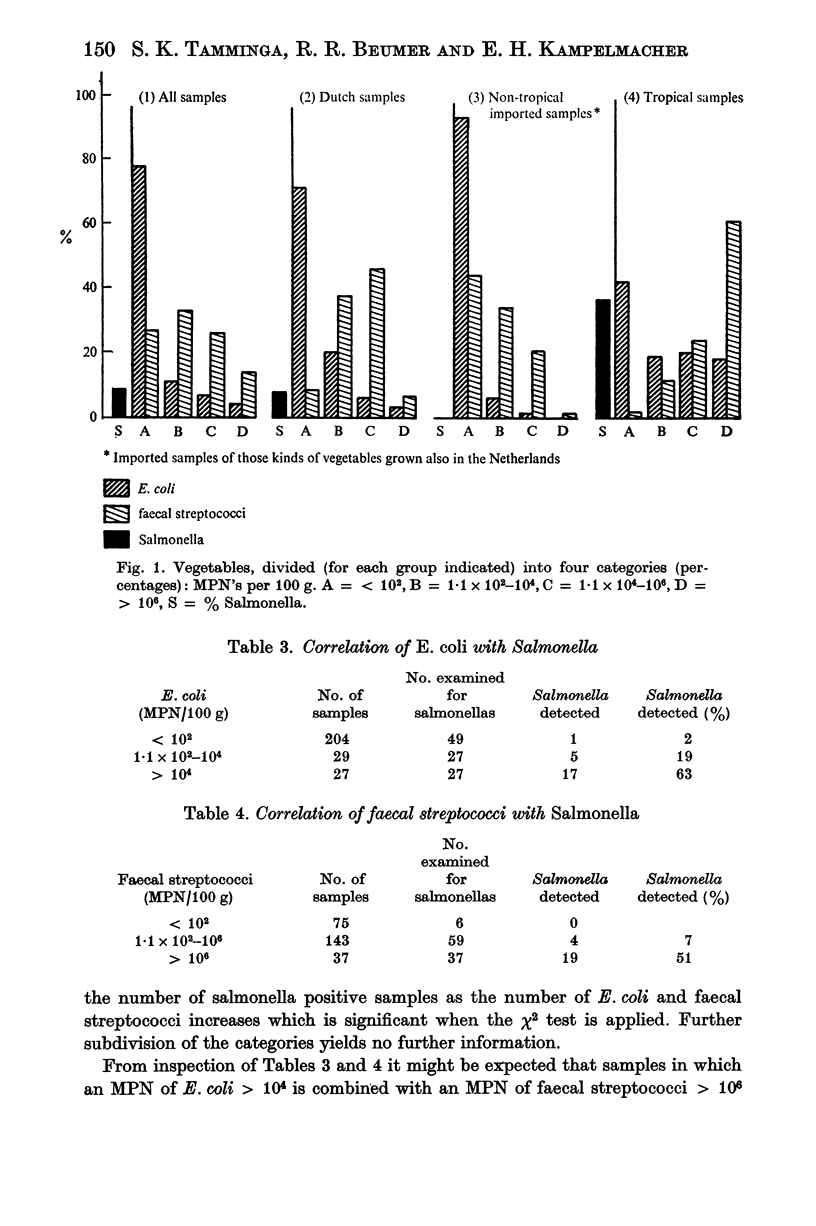

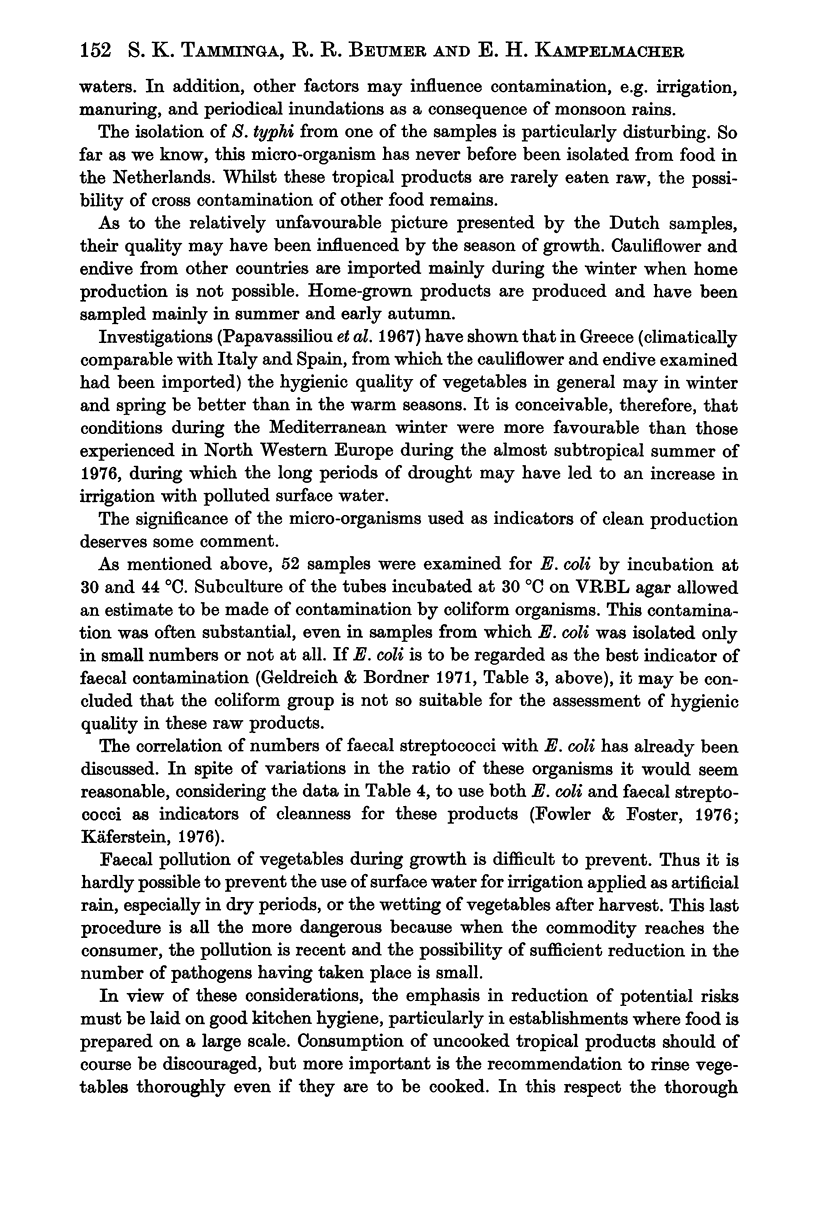
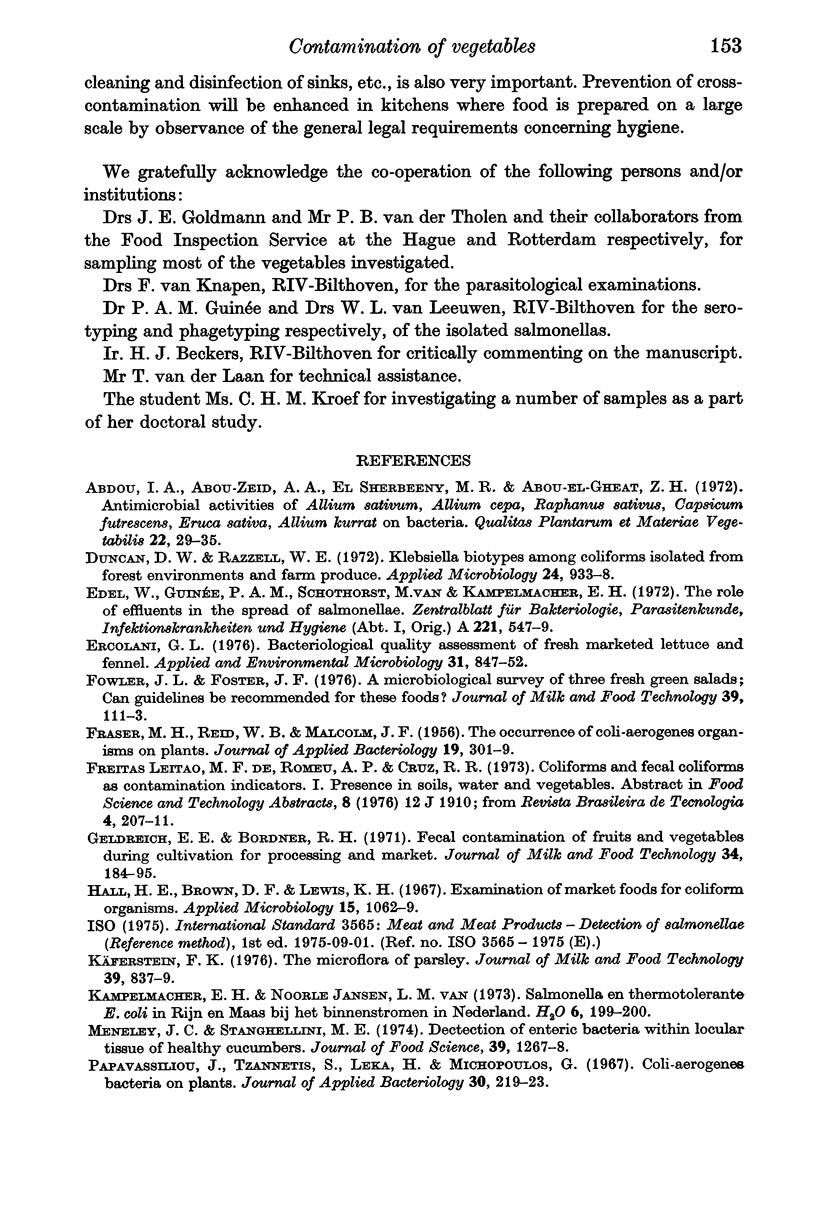
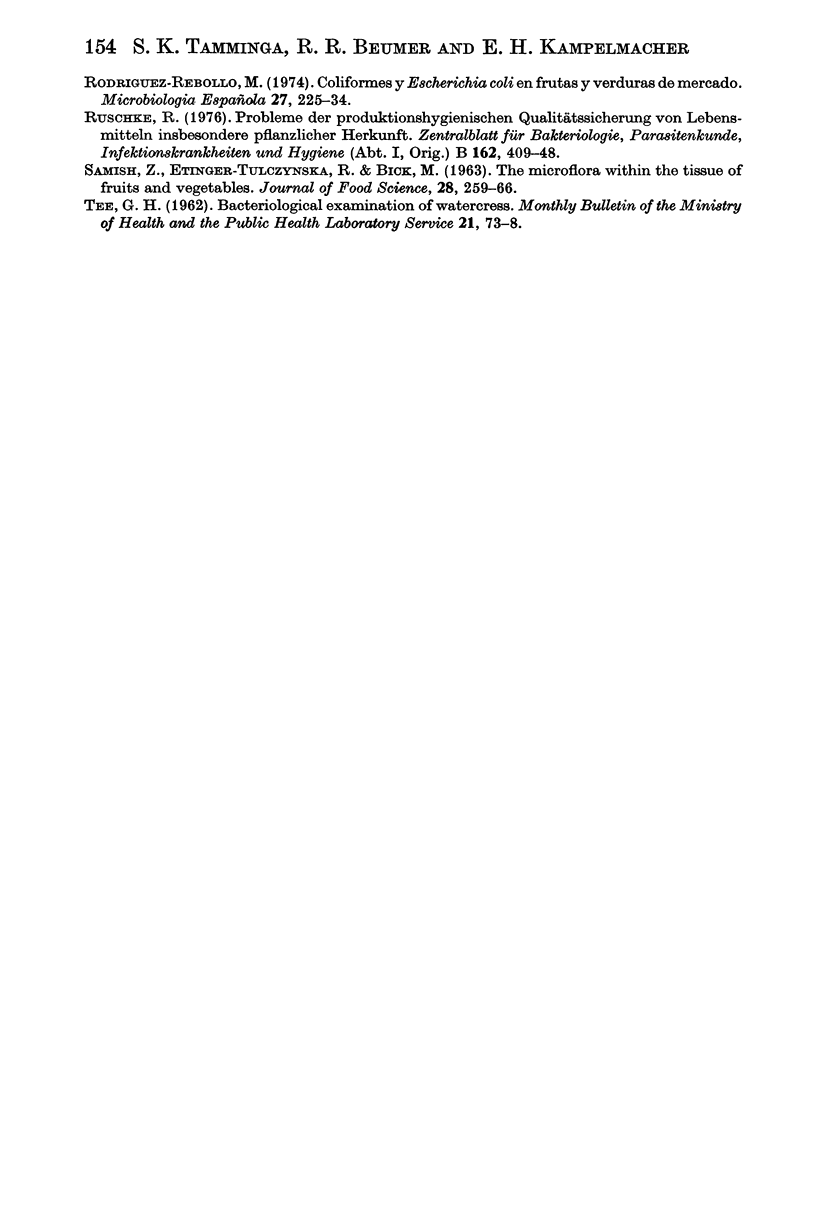
Selected References
These references are in PubMed. This may not be the complete list of references from this article.
- Duncan D. W., Razzell W. E. Klebsiella biotypes among coliforms isolated from forest environments and farm produce. Appl Microbiol. 1972 Dec;24(6):933–938. doi: 10.1128/am.24.6.933-938.1972. [DOI] [PMC free article] [PubMed] [Google Scholar]
- Edel W., Guineé P. A., van Schothorst M., Kampelmacher E. H. The role of effluents in the spread of Salmonellae. Zentralbl Bakteriol Orig A. 1972 Sep;221(4):547–549. [PubMed] [Google Scholar]
- Ercolani G. L. Bacteriological quality assessment of fresh marketed lettuce and fennel. Appl Environ Microbiol. 1976 Jun;31(6):847–852. doi: 10.1128/aem.31.6.847-852.1976. [DOI] [PMC free article] [PubMed] [Google Scholar]
- Hall H. E., Brown D. F., Lewis K. H. Examination of market foods for coliform organisms. Appl Microbiol. 1967 Sep;15(5):1062–1069. doi: 10.1128/am.15.5.1062-1069.1967. [DOI] [PMC free article] [PubMed] [Google Scholar]
- Papavassiliou J., Tzannetis S., Leka H., Michopoulos G. Coli-aerogenes bacteria on plants. J Appl Bacteriol. 1967 Apr;30(1):219–223. doi: 10.1111/j.1365-2672.1967.tb00291.x. [DOI] [PubMed] [Google Scholar]
- Rodríguez-Rebollo M. Coliformes y Escherichia coli en frutas y verduras de mercado. Microbiol Esp. 1974 Jul-Dec;27(3-4):225–234. [PubMed] [Google Scholar]
- TEE G. H. Bacteriological examination of watercress. Mon Bull Minist Health Public Health Lab Serv. 1962 Apr;21:73–79. [PubMed] [Google Scholar]


